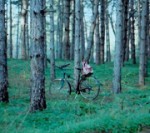
The Open Working Group on sustainable development goals has arrived at an important moment of transition. “Almost one productive year has passed in which we have done some deep reflection together, and now we begin crafting a proposal on sustainable development goals”, said Csaba Kőrösi, Permanent Representative of Hungary and Co-Chair of the Group, at the conclusion of its eighth session.
Ambassador Kőrösi presented the Co-Chairs’ draft summary, in which he and the second Co-Chair of the Group, Macharia Kamau, Permanent Representative of Kenya, outline some of the main arguments made during the deliberations that lasted from 3 to 7 February.
Healthy oceans and forests are vital life-support systems
The first cluster of issues discussed at the session – oceans and seas, forests and biodiversity – was universally acknowledged as important for the sustainable development agenda. “Picking up on the metaphor of the Earth’s lungs, if oceans are one lung, forests are the other”, said Ambassador Kőrösi. Forests and oceans were described as by far the richest habitats of biodiversity, on which humans depend for food supplies, medicines, livelihoods, ecosystem stability, and other vital services, and which also carry important cultural value. “We need to recognize the living value of species beyond their commodity values”, said the Ambassador, referring to a statement a delegate had made earlier.
“Picking up on the metaphor of the Earth’s lungs, if oceans are one lung, forests are the other”
Csaba Kőrösi
Permanent Representative of Hungary and Co-Chair of the Group
The Open Working Group discussed a number of drivers of biodiversity loss that the sustainable development goals should help slow and reverse, among them deforestation, overfishing, pollution and habitat alteration from ocean acidification. Positive efforts by governments and stakeholders that could help reverse the tide were also highlighted, such as the creation of biosphere reserves, protected areas and no-catch zones. Indigenous peoples and local communities would have to enjoy benefits from such ecosystem management for it to succeed.
Being born into poverty must not be a life sentence
With respect to the second cluster of issues – promoting equality, including social equity, gender equality and women’s empowerment – concerns were voiced by many about the wide and in some respects widening inequalities in the world, both within and between countries. “These pose a risk to social cohesion and addressing them effectively calls for social solidarity,” said Co-Chair Kőrösi.
Referring to a metaphor used during the deliberations, he also said that it was critical that the ‘social elevator’ is in good working order, so that being born into poverty is not a life sentence. This could be achieved by affordable access for the poor and disadvantaged to education and health care as well as productive and remunerative employment opportunities. Policies supportive of entrepreneurship and small-scale enterprises could also enhance opportunities for the poor.
Gender inequality was overwhelmingly recognized as the most pervasive form of inequality in the world. Promoting gender equality and women’s empowerment was not only a matter of human rights, but a fundamental condition for sustainable social and economic development. “We know that depriving women of the right to realize their full human potential imposes an enormous cost on society as a whole,” said Ambassador Kőrösi.
There was broad support for a two-pronged approach to reflecting gender equality and women’s empowerment in the sustainable development goals: through a stand-alone goal and through mainstreaming gender equality in other goals.
In the course of the discussions it was also noted that social equity had other important dimensions in addition to gender equality. All vulnerable groups would need to be ensured equitable access to capacities and opportunities, basic services and participation in social, economic and political life.
Peaceful societies are the basis for sustainable development
Regarding the final cluster of issues – conflict prevention, post-conflict peacebuilding and the promotion of durable peace, rule of law and governance – many delegates said that conflict undermines development and that peaceful societies are the basis for sustainable development.
Severe inequalities of power, voice, opportunity and wealth among ethnic and other identity groups were identified as being among sources of conflict, as were competition over natural resource wealth, transnational crime and illicit arms trade, among others.
Participatory governance was mentioned as contributing to conflict prevention. It was stressed that such governance would need to include both women and men as well as young people and all vulnerable groups, including indigenous peoples. Rule of law was described as a cornerstone of society, which, as one speaker noted, should focus not just on fair process but on fair outcomes at national and global levels.
The SDGs will need a good business plan
The valuable contributions of Major Groups of society to the sessions’ discussions were also recognized by the Co-Chairs. One such contribution was the observation that a good business plan will be needed if any goals are to be achieved, and that means of implementation could be viewed as part of that plan. The Co-Chairs also noted as important the question raised by Major Groups as to how the High-Level Political Forum would be empowered to perform its important oversight function in monitoring progress towards the sustainable development goals.
The Co-Chairs’ concluding remarks and bullet point summary can be found on the Sustainable Development Knowledge Platform.
The photo shown was taken by Olga Lavrushko, Ukraine, one of the winners of the UN International Forest Photograph Awards. The photos of the winners and finalists of this contest are currently on display (until 28 February 2014) in the “My Forest – Our Future” photo exhibit at the Gabarron Foundation in New York.
